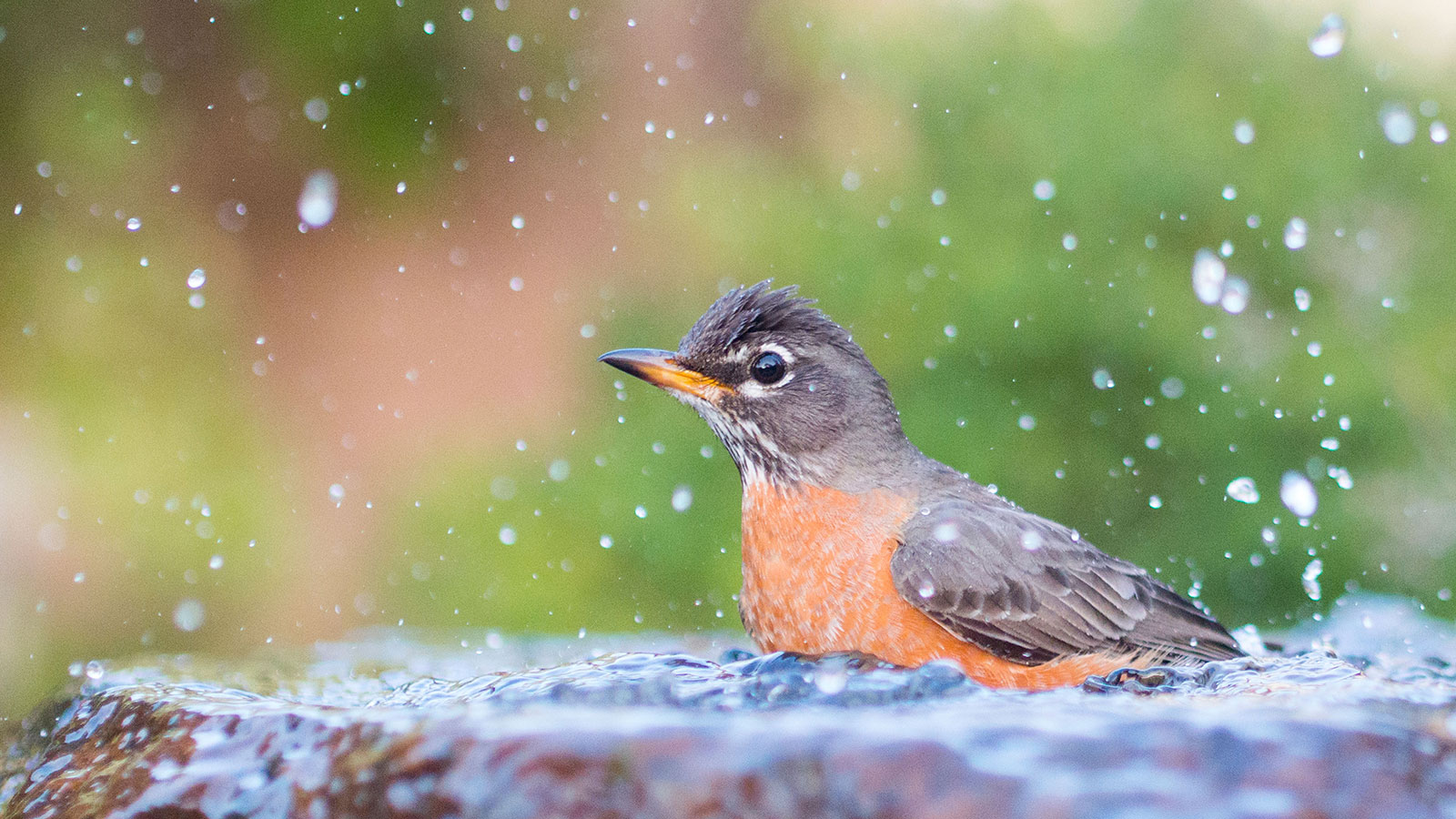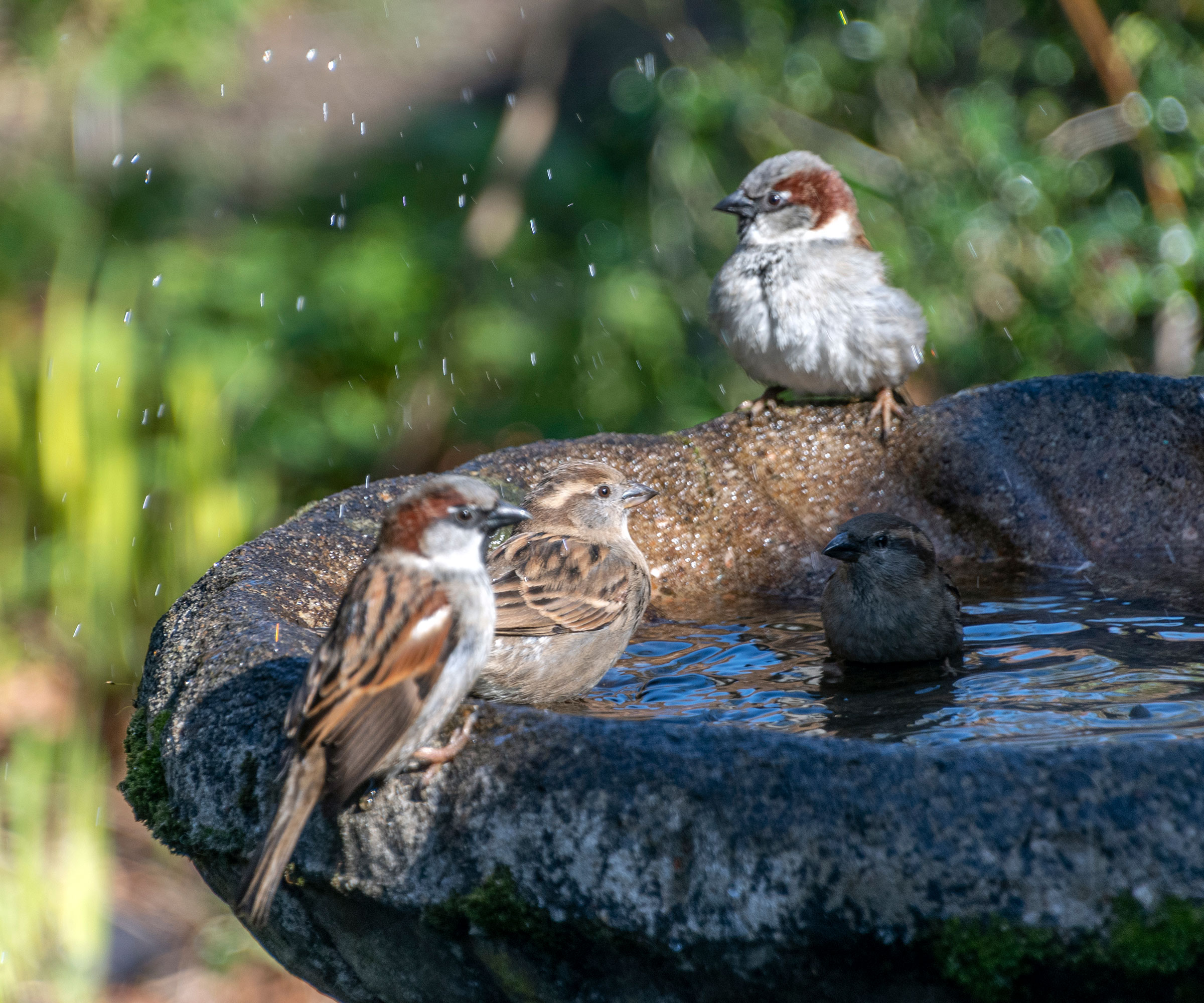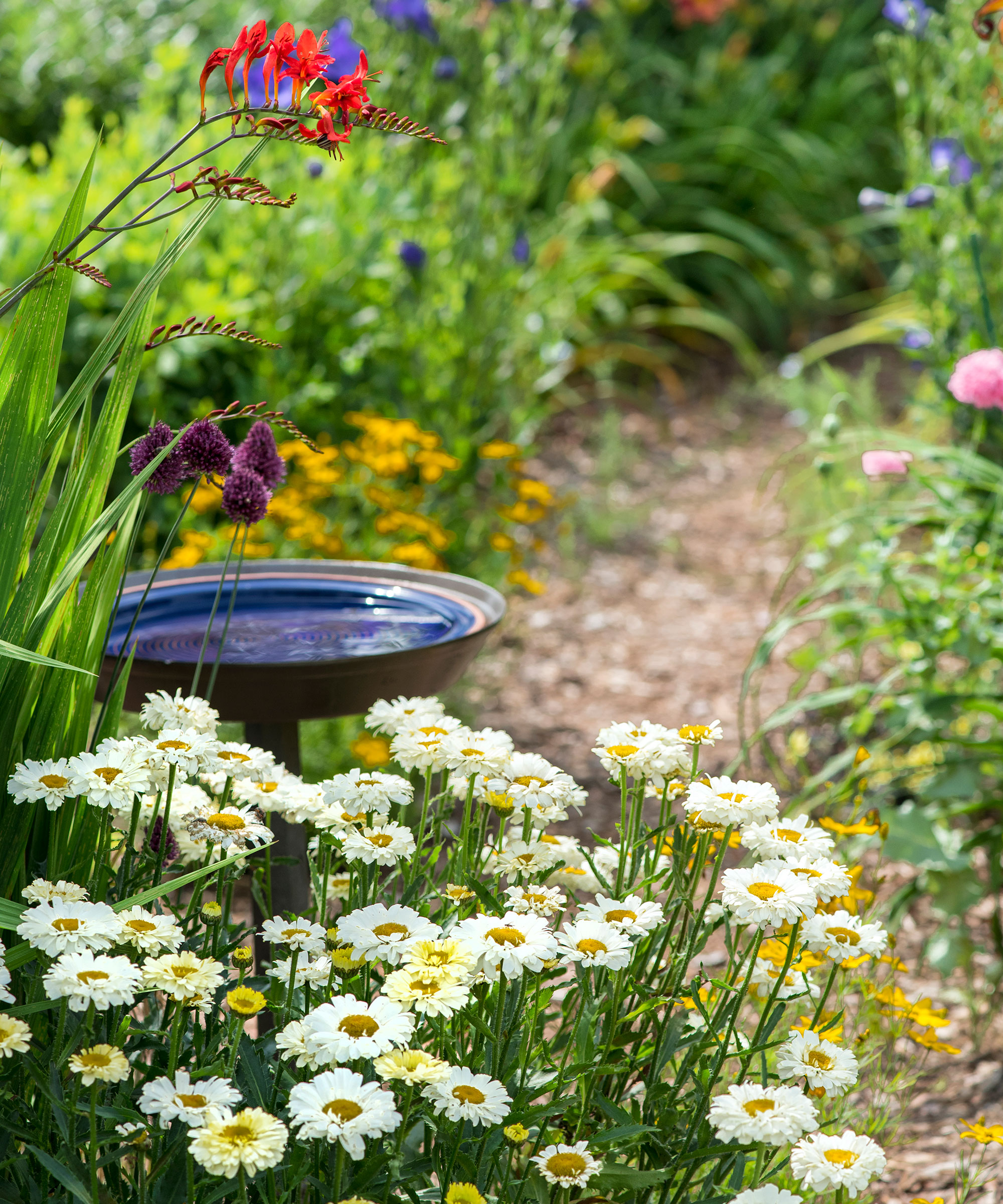
The prospect of setting up a bird bath in your backyard is undoubtedly an exciting one. I always imagine the feathered friends splashing around happily in my garden, bringing a buzz and life to my outdoor space that is tough to replicate with plants alone.
But after setting up my first bird bath several years ago, I quickly realized it’s not as easy as placing it anywhere and waiting for wildlife to flock to you. If you’re interested in installing a bird bath in your garden, or already have one and are wondering why the birds aren't using it, there are a few mistakes you could be making.
From incorrect location to lack of maintenance and more, there are plenty of possible bird bath mistakes you need to be aware of.
Common bird bath mistakes you need to avoid
Birds are an essential element of any wildlife garden, so make sure you are doing everything you can to encourage them to your yard by avoiding these simple bird bath errors.
1. Choosing the wrong location
The placement of key wildlife features such as your bird house and bird bath plays a massive role in whether the birds in your yard will want to use them or not.
Birds generally prefer sheltered places away from potential predators to take a dip. Leaving your bird bath out in the open with no cover close by is a common wildlife garden mistake, as any wary wildlife will be far less likely to use it.
Distance from the ground also influences which birds will use the bird bath. I have a couple dotted around my garden, and those that are lifted above the ground are used far more than the rock bath I placed directly on the ground. Some small birds do frequent it from time to time, but most feel too vulnerable in these spots, preferring the taller baths.
Choosing the wrong location is also a common hummingbird feeder mistake, so keep this in mind when considering where to site yours if you plan to hang one near your bird bath.

2. Opting for the wrong materials
When choosing the right bird bath for your backyard, materials are also important to consider. According to Margaret C. Brittingham, former professor of wildlife resources at Pennsylvania State University, 'Birds do not like slippery surfaces, and baths made out of materials such as glazed pottery or smooth plastics are not as attractive as those with a rough surface, like concrete or terracotta.'
For existing bird baths that are slippery, Margaret recommends creating a non-stick surface at the bottom with rocks or bathtub stickers for better grip.
Certain materials also absorb heat from the sun more than others, potentially becoming too hot for birds to perch on. Metal bird baths are long-lasting and come in many modern designs, but they become so hot in the sun (particularly in summer) that birds are unlikely to use them on the days they need them most.
3. Going for the wrong size bird bath
If you have a small backyard, your first choice is probably a small bird bath. However, these often end up requiring even more maintenance than larger baths while attracting fewer birds.
Small bird baths don’t hold much water, and it can evaporate quickly when the sun is high. Hanging bird baths are also commonly recommended to save space but lose water quickly when moved. I have to fill my smallest bird bath almost daily to stop it from drying out, requiring constant attention.
On the other hand, extra large bird baths also come with some additional maintenance. They are typically tougher to clean and collect plenty of debris, but have the potential to attract more birds.
I tend to prefer the go big or go home approach. Although I need to scrub my larger bird baths often, the amount of birds that enjoy them compared to the smaller one is well worth the extra effort.
4. Bird bath is too deep
Although the size of your bird bath impacts things like maintenance, the depth of the bath impacts how many birds use it. Birds bathe in shallow water and won’t use a bird bath that is too deep for anything more than drinking water.
According to George H. Harrison from the National Wildlife Federation, 'One of the most common mistakes made with bird baths is providing water that is too deep. Though birds may be able to drink from the edges, they will not bathe in water that is more than a couple of inches deep.'
'This problem can be easily solved when a rock is placed in the water to create an island of shallow water. Even better is an island that is partly above water, so that the birds can land on it and then wade into the shallows for a bath,' adds George.

5. Not cleaning regularly
Bird baths are not a backyard feature you can set and forget. With regular use, they quickly gather garden debris and become a home for bacteria that can be harmful to birds. Frequent cleaning around once or twice a week will keep the birds in your garden safe and happy year-round.
If you keep a consistent cleaning routine, there shouldn’t be any intense scrubbing required. Simply wash out the bath, wiping away any algae or debris with a cloth or sponge. Avoid using harsh cleaning products that can affect water quality and by extension, the birds that use the water.
Cleaning hummingbird feeders regularly is also recommended if you want to ensure these popular visitors to your yard stay in good health too.
6. Forgetting about temperature
Bird baths see the most activity in the summer months when temperatures are high, but that doesn’t mean they go unused over winter. Birds will still gather around your bird bath during temperature dips to drink or clean off, but they can’t do that if the water in the bath is frozen.
To get around this, Margaret Brittingham recommends heating the water slightly for those in regions with harsh winters.
'A variety of heated bird baths will keep the water in your bath above freezing during the winter; there are also submersible heaters that you can place directly into the bath water. Both types require a nearby electrical outlet. Solar heaters are also available for bird baths. These work well under sunny conditions but not when it is cloudy or overcast.'
The GESAIL bird bath heater from Amazon can be fully submerged and will only switch on when necessary to prevent the water from freezing.
7. Not filling with fresh water
We are often warned against drinking old, stagnant water we come across outdoors for fears of poor quality and illness. The birds in your garden probably don’t want to drink this kind of water either.
Fresh water is safest for the birds in your backyard, and adding some movement by circulating regularly or adding a small water fountain will also attract them to the bath while preventing the water from stagnating.
'Regardless of the kind of bird bath, it should contain clean water. In summer, that means replacing still water daily, and recirculating water every week or two. Topping up the pools regularly will also help, as long as the water isn’t too deep,' advises George Harrison.

8. Not filling it at all
While each of these bird bath mistakes are vital to avoid, arguably the biggest mistake you can make with your bird bath is forgetting to fill it at all.
Before I made filling my bird baths part of my regular weekly watering routine, they would often sit empty for weeks until I glanced at them and wondered where all the birds had gone. Without water, the bird bath loses almost all value beyond the ornamental, so make sure you check regularly that it is fully topped up.
Avoiding these bird bath mistakes is relatively easy and doesn't have to take up much of your time.
By filling your bird bath regularly and prioritizing care, you will attract as many feathered friends to your garden as possible. Once birds begin to recognize your backyard as a reliable water source, they will keep on coming. If you include plenty of plants for birds too, your yard will soon become their favorite destination.







